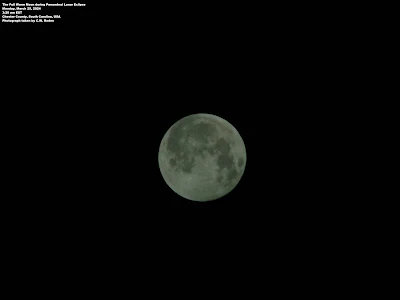Good evening, fellow stargazers!
The first full moon of spring 2024 her in the Northern Hemisphere rose this evening into a somewhat clear night sky with only a few small clouds.
The March full moon -- also known as the Full Worm Moon in North America -- is the second smallest (most distant) full moon from the Earth in 2024 at around 251,900 miles (or 405,394 kilometers) away.
The Full Worm Moon of 2024 also takes place during a Penumbral Lunar Eclipse -- when the outer part of Earth's shadow covers the full moon when Luna is on the opposite side of the Earth from the Sun. The Penumbra is the outer lighter part of the Earth's shadow as opposed to the darker inner part of the Earth's shadow, the Umbra.
Luna began to cross the Earth's penumbra shadow as viewed here in South Carolina at about 12:54 a.m. Eastern Standard Time and would reach peak eclipse at around 3:12 a.m. EST when the Full Worm Moon would cover roughly 90% of the lunar surface.
Since the Moon would only travel inside the lighter part of the Earth's shadow, Luna won't appear to have a dark bite taken out of her, but rather appear slightly darker to the naked eye.
The Penumbral Lunar Eclipse ended at 5:35 a.m. EST, but by then your favorite blogger had long since returned to bed.
The following are the photos I took of this late evening night sky event. One shows the Full Worm Moon in the eastern sky with the bright star Spica lower towards the horizon. Spica and Luna will appear next to each other over the next couple nights as the Moon moves past it towards the east. The second is a clearer shot of the surface of the Full Worm Moon prior to the lunar eclipse and the third and final photo shows the slightly darker moon now fully in the Earth's penumbra shadow.
I hope y'all enjoyed my photos for the evening and, until next time -- be sure to keep your eyes to the night skies, y'all hear!



No comments:
Post a Comment